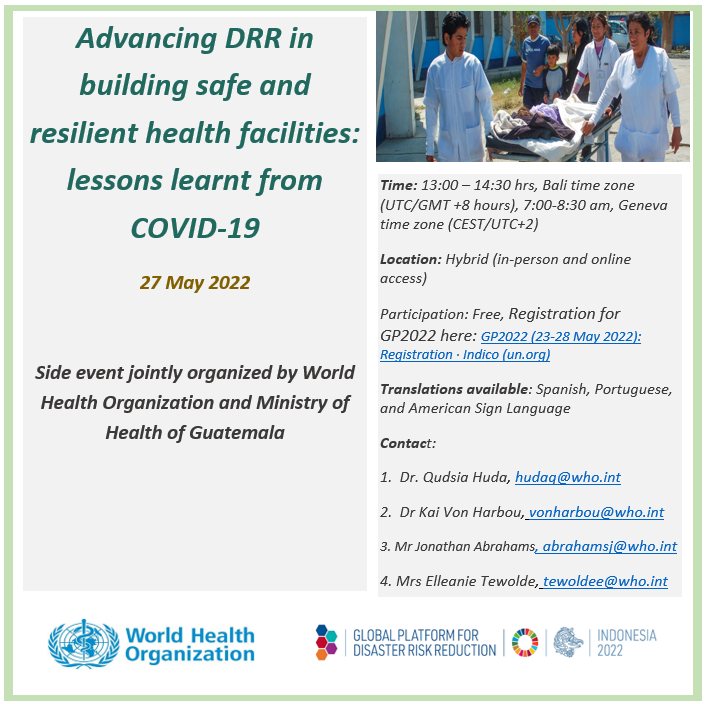Background/Rationale
The COVID-19 pandemic along with concurrent emergencies, has exposed vulnerabilities and caused disruptions to health services in even the most robust health systems. Hospitals are a central to the resilience of communities, countries and their health systems. Global frameworks for disaster risk reduction have recognized the important role of hospitals in local and national action to manage the risks of emergencies and disasters. Countries have established programs and conducted activities aimed at strengthening the safety and preparedness of health facilities so that they can operate with maximum functionality during emergencies and disasters. WHO and partners have developed and supported countries with tools and training that support health facility assessment, resource availability, health services, exercise management, disability, incident management and mass casualty management. Greater attention has been placed on ensuring that health facilities reduce their carbon footprint and waste and are able to with the effects of climate change. In the COVID-19 pandemic, countries identified needs for a set of tools, including for rapid assessment of hospital readiness for COVID-19 and the continuity of essential services, which have been applied in many countries, including in refugee settings.
Objectives
- Share innovations and experiences gained during the COVID-19 response to strengthen the safety, functionality and sustainability of health facilities
- Discuss the central role of health facilities in managing health risks of emergencies and disasters in health systems and the whole-of-society
- Ensure that investment in health facilities is central to the comprehensive risk management strategies and in resilient critical infrastructure at global, national, local and community levels
- Contribute to the knowledge base on managing complex and interconnected risks, such as pandemics and climate related emergencies
- Discuss whole of society approaches and co-dependencies in reducing risk and building resilience for critical infrastructure
Documents
Learn More
Emphasis will be on identifying and implementing good practices in health facility safety and resilience that contribute risk-informed and inclusive COVID-19 response, recovery and rehabilitation in humanitarian and low resource settings


